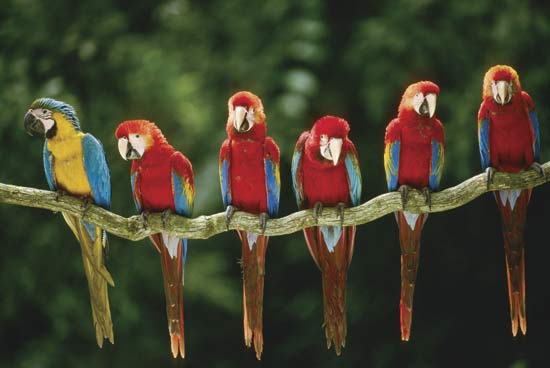You think you’re having a rough day? The blue-throated macaw can’t find a safe place to nest due to habitat destruction, and at last count, there were only about 500 total birds left on the planet. Sadly, this particular macaw is just one of 1440 creatures currently on the endangered species list. But it’s not all doom and gloom. Thanks to conservation efforts, many formerly endangered populations have made robust recoveries, and you can help by adding these five easy habits to your routine. Do it for the macaws!
1. Buy Sustainable Products and RECYCLE!
Buy recycled paper, sustainable products like bamboo and Forest Stewardship Council wood products to protect forest species. Never buy furniture made from wood from rainforests. Recycle your cell phones, because a mineral used in cell phones and other electronics is mined in gorilla habitat. Minimize your use of palm oil because forests where tigers live are being cut down to plant palm plantations.
2. Fill the Yard with Native Plants
Native plants provide food and shelter for native wildlife. Attracting native insects like bees and butterflies can help pollinate your plants. The spread of non-native species has greatly impacted native populations around the world. Invasive species compete with native species for resources and habitat. They can even prey on native species directly, forcing native species towards extinction. For more information about native plants, visit http://www.plantsocieties.org.
3. Avoid Herbicides and Pesticides
They may keep yards looking nice but they are in fact hazardous pollutants that affect wildlife at many levels. Many herbicides and pesticides take a long time to degrade and build up in the soils or throughout the food chain. Predators such as hawks, owls and coyotes can be harmed if they eat poisoned animals. Some groups of animals such as amphibians are particularly vulnerable to these chemical pollutants and suffer greatly as a result of the high levels of herbicides and pesticides in their habitat. For alternatives to pesticides, visit beyondpesticides.org.
4. Make your home wildlife friendly
Secure garbage in shelters or cans with locking lids, feed pets indoors and lock pet doors at night to avoid attracting wild animals into your home. Reduce your use of water in your home and garden so that animals that live in or near water can have a better chance of survival. Disinfect bird baths often to avoid disease transmission. Place decals on windows to deter bird collisions. Millions of birds die every year because of collisions with windows. You can help reduce the number of collisions simply by placing decals on the windows in your home and office. For more information on what you can do, check out these tips from the US Fish and Wildlife Service.
5. Visit a national wildlife refuge, park or other open space
Yep, just going to say hi to the animals can help! These protected lands provide habitat to many native wildlife, birds, fish and plants. Scientists tell us the best way to protect endangered species is to protect the places where they live. Get involved by volunteering at your local nature center or wildlife refuge. Go wildlife or bird watching in nearby parks. Wildlife related recreation creates millions of jobs and supports local businesses. To find a wildlife refuge near you, visit www.fws.gov/refuges/ To find a park near you, visit http://www.nps.gov To find a zoo near you, visit www.aza.org
Want to know more? See even more ways that you can help endangered species at endangered.org
–Erin Feher











